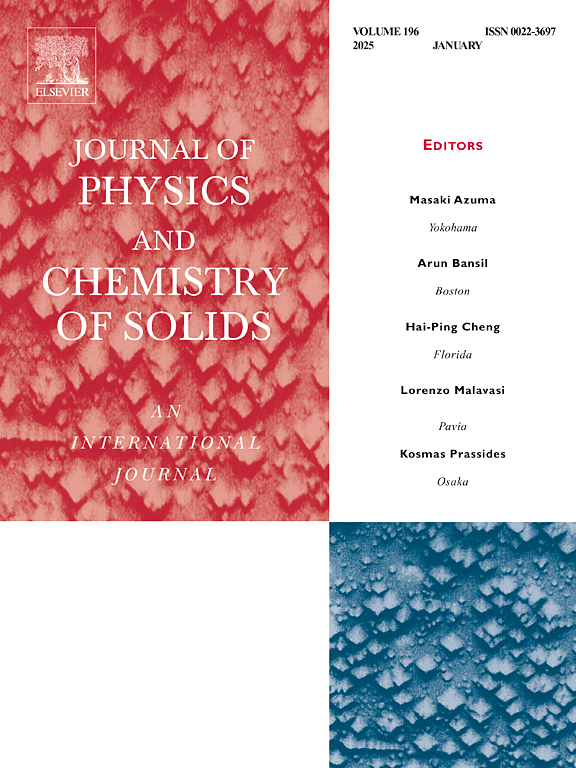IF 4.3
3区 材料科学
Q2 CHEMISTRY, MULTIDISCIPLINARY
引用次数: 0
摘要
六氰基铁酸钠普鲁士白(PW)是一种用于钠离子电池的商用阴极材料。然而,六氰基铁氧体的结构中含有水分,PW 的电化学性能在很大程度上取决于材料的脱水程度。此外,PW 电极的容量会迅速下降,这被认为与界面化学反应有关。保护性涂层可以抑制或完全避免此类反应。在这项工作中,我们在微米大小的 PW 颗粒上涂覆了聚苯胺(PANI)外壳,并研究了升温干燥对 PW@PANI 材料的影响。在 85 mA g-1 的条件下,PW@PANI 材料的放电容量为 89.1 mAh g-1,500 次循环的容量保持率为 78.4%。在 140 °C 下干燥的 PW@PANI 电极在 85 mA g-1 下的前 200 个循环中显示出稳定的容量,最高可达 ≈ 97 mAh g-1,但与未干燥的 PW@PANI 电极相比,其在 500 个循环中的容量保持率较低。在 180°C 下干燥 PW@PANI 电极会导致容量迅速下降。我们首次对用于合成 PW@PANI 的盐酸溶液浸泡过的 PW 粉末进行了比较研究,并观察到其长期稳定的电化学性能。本文章由计算机程序翻译,如有差异,请以英文原文为准。
Effect of drying on the polyaniline-coated Prussian white cathode material for sodium-ion batteries
Sodium iron hexacyanoferrate Prussian white (PW) is a commercially available cathode material for sodium-ion batteries. However, the structure of the hexacyanoferrate contains water, and the electrochemical performance of the PW strongly depends on the dehydration level of the material. Moreover, PW electrodes show a rapid capacity decrease, which is argued to be related with interfacial chemical reactions. A protective coating may be applied to suppress or completely prevent such reactions. In this work, we coated μm-sized PW particles with polyaniline (PANI) shell and investigated the effect of drying at increased temperature on PW@PANI material. The PW@PANI material exhibits a discharge capacity of 89.1 mAh g−1 at 85 mA g−1 with a capacity retention of 78.4 % over 500 cycles. PW@PANI electrode dried at 140 °C demonstrates a stable capacity of up to ≈ 97 mAh g−1 during first 200 cycles at 85 mA g−1, however, its capacity retention over 500 cycles is lower compared to the non-dried PW@PANI electrode. Drying PW@PANI electrodes at 180°C leads to a rapid capacity decrease. For the first time, a comparative study of the PW powder soaked with HCl acid solution used in the synthesis of PW@PANI has been performed and its stable long-term electrochemical performance has been observed.
求助全文
通过发布文献求助,成功后即可免费获取论文全文。
去求助
来源期刊
CiteScore
7.80
自引率
2.50%
发文量
605
审稿时长
40 days
期刊介绍:
The Journal of Physics and Chemistry of Solids is a well-established international medium for publication of archival research in condensed matter and materials sciences. Areas of interest broadly include experimental and theoretical research on electronic, magnetic, spectroscopic and structural properties as well as the statistical mechanics and thermodynamics of materials. The focus is on gaining physical and chemical insight into the properties and potential applications of condensed matter systems.
Within the broad scope of the journal, beyond regular contributions, the editors have identified submissions in the following areas of physics and chemistry of solids to be of special current interest to the journal:
Low-dimensional systems
Exotic states of quantum electron matter including topological phases
Energy conversion and storage
Interfaces, nanoparticles and catalysts.

 求助内容:
求助内容: 应助结果提醒方式:
应助结果提醒方式:


